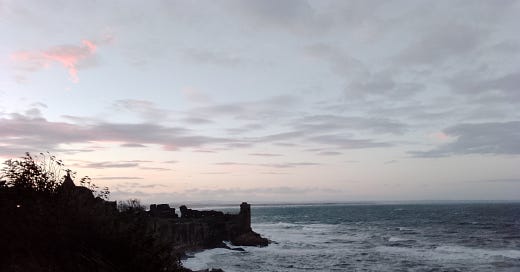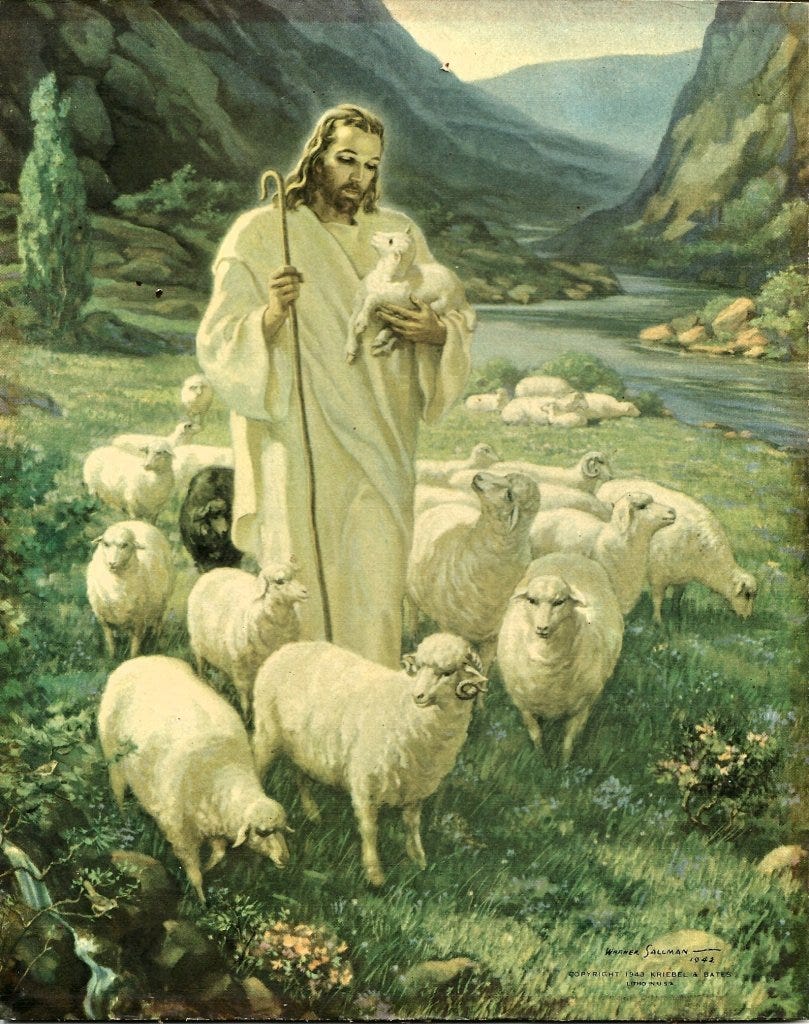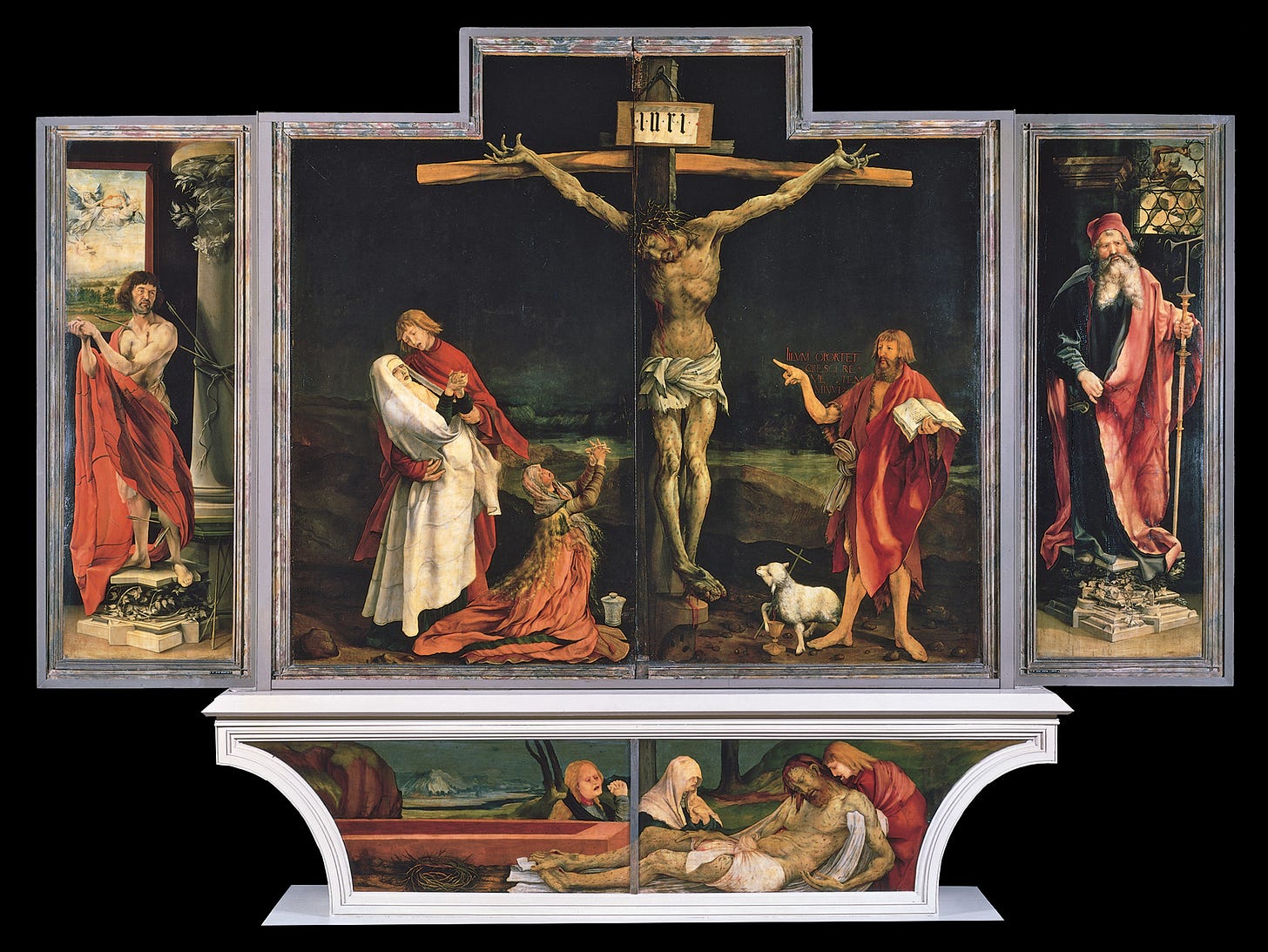Dear friends,
I’m happy to introduce you to my newsletter. In the coming year, I hope to keep in contact with friends about my studies via this medium. Due to time restraints, it’ll be fairly simple: a little update from me, some intellectual input from my studies and some recommendations of books to read & artworks to contemplate.
First, a short introduction: my name is Marijke (Maria for the English speakers) Huisman. As befits the eldest daughter of missionary parents, I spent my youth gallivanting about Europe and continued my travels studying philosophy and theology in Austria during my undergrad. I’ve been ‘at home’ for the past year, dipping my toe into French and German literature in Leuven & Brussels. After a busy summer travelling, I’ve come to nest in St. Andrews in Scotland. Thanks to God’s providence & some helping hands, I’m currently in the second week of my master’s in Theology & the Arts (and somehow already behind on my readings.)
Why did I end up in Scotland, studying what I do? I have two overarching questions which I hope to wrestle with this upcoming year:
Can beauty lead us to truth about God?
This question arose from dealing with much-too-rational, overwhelmingly male theology students for three years during my undergraduate degree. In such circles, there was a dismissal of anything except syllogisms as a basis of truth. It seems that some people find syllogisms enough to base their life on. If you haven’t guessed it yet, I am not one of those people. Beautiful things have always spoken to me more acutely than syllogisms (although I don’t deny the mathematical proportionality and thus beauty of a syllogism) and I have no trouble confessing I’ve changed my mind on things purely based on an emotional response. I’m looking forward to discovering an intellectual defence for the irrational foundation of my thinking.
What is the moral value of beauty in the life of a Christian?
This question arose from my great liking of luxury items, in conflict with my Franciscan missionary upbringing & (it seems) Christianity itself. I hope to find out if a love of beautiful things is as wholly incompatible with the Christian life as I have been told.
And now, the reality:
My studies have started off well. I will admit to feeling slightly off-put by the lack of Plato in our introductory classes, but our assigned papers should resolve this issue. Long essays must be written in the next two months, which always opens up the question: how can I use this paper as an excuse to delve into A Thing I Haven’t Gotten Around To Yet? For our class in ‘Religious Experience & Aesthetic Theory’ we’ll be forced to deal with art outside our comfort zone of literature to venture into the realms of fine art, film & music. I’ve decided to take a look at film; a medium oft-derided by myself for its simplicity in contrast to the exertion literature requires. Still, perhaps there might be some redeeming elements in it. I’m looking forward to spending the weekend delving into the religious themes in the work of the French film director Éric Rohmer. If you know of something I absolutely must look into, do let me know & I can see if I can add it in, even if merely in a footnote.
Ideas I’m pondering this month…
This week we had a very interesting discussion on the value of popular art & kitsch in comparison to high art. Reader, if it hasn’t become clear by now, I will acknowledge that I am a bit of a snob. If bad art causes the average viewer to turn away in embarrassment, I have tended to take this to extremes and view bad art as some sort of moral evil. My views were thoroughly challenged by the introduction of religious kitsch, see for example this excruciating example of Jesus the Good Sheperd by the American artist Warner Sallman. Paintings like these are ubiquitous in religious circles, but I personally also find them 1) terrifically ugly & 2) terribly bad at portraying Jesus realistically (since when is Christ blond?)
For this class, we read through people’s positive reactions to Sallman’s portrayals of Christ. For the people touched by his work, the value of the artwork lay in the way it mediated God to them, not in its artistic qualities. This mediative function is helped by portraying Jesus as a northern European man, for most of the people who responded positively were also Americans of northern European descent. It turns out that Sallman’s lack of realism is actually a positive example of inculturation.
Alright then, so Sallman has had positive effects on some believers. Despite this, his portrayal of Jesus remains a bit uncomfortable for me. Might there be a use in such discomfort? Dionysius the Areopogite seems to think so. In The Celestial Hierarchies, he discusses the useful effects of awkward analogies. The beautifully fitting analogies such as “Christ as the Good Shepherd” can become dangerously idolatrous: we are so used to them that it becomes difficult to see that it is merely an analogy, only an image of God. Awkward analogies jolt us awake. Dionysius is discussing verbal art here, but the same idea seems to apply to images. With traditional images such as Orthodox icons, we are programmed to respond in a devotional manner. Images like Sallman’s lead us to reflect on who Christ is - obviously not a Northern European man, but - who is He then? I leave that up to you to ponder.
Recommendations:
Beauty for Truth’s Sake by Stratford Caldecott
In honour of the beginning of the academic year, book recommendations this semester will be in the theme of ‘the intellectual life’ (have no fear if this does not appeal to you! Next semester I hope to return to something ridiculously feminine like homemaking.) In this little book, Caldecott powerfully argues for the unity of truth, beauty & goodness as studied in the traditional liberal arts. The best part is his chapter on numbers & geometry, it convinced even this die-hard humanities student that there might be more to the sciences than I thought. It’s quickly read, but best slowly digested. View a preview here.
Isenheim Altarpiece, by Matthias Grünewald
This altarpiece is often seen as the culmination of depictions showing a suffering Christ, a way of depicting the crucifixion which gained popularity in the Middle Ages instead of the Byzantine style of displaying the crucifixion as a scene of triumph. It was originally meant for a hospital of the Antonite order. What is beautiful to note is the way in which the artist adapted this painting to speak to the hospital patients in their pain. The French writer J. K. Huysmans, who wrote multiple essays on the painting, says it best: “That awful Christ who hung dying over the altar of the Isenheim hospital would seem to have been made in the image of the ergotics who prayed to him; they must surely have found consolation in the thought that this God they invoked had suffered the same torments as themselves, and had become flesh in a form as repulsive as their own; and they must have felt less forsaken, less contemptible.”
Now I’ve made it to Great Britain, I find myself listening to the Northern Irish singer Foy Vance on repeat. My favourite song of his remains Joy of Nothing (about, well, the joy of ordinary life) but since I’m in Scotland, I’m currently enjoying his recordings from the Highlands. Let me know if there is any Scottish music I must give a listen!
So, I’m off for a walk down to the sea before dinner. Till next month!
Greetings from St Andrews,
Maria







Well, Marijke, I'd argue about film being more simplistic than literature. Recently, when I've tried writing myself, I find myself thinking much more as tho I was filming the scene, rather than describing it in words. It's alot easier for me to take on a facial expression that completely changes the words I say than describe it. Also, the idea of creating a mood purely through the use of camera and/or music is something I'm very interested in. It's a different medium, certainly; which is interesting, considering that it's basically trying to do the same thing as literature, telling stories, broadly speaking. But it certainly has its own, unique method of doing that, one that is worthy of admiration by any lover of beauty!
I haven't read November's post yet. Perhaps you've already discovered this for yourself!